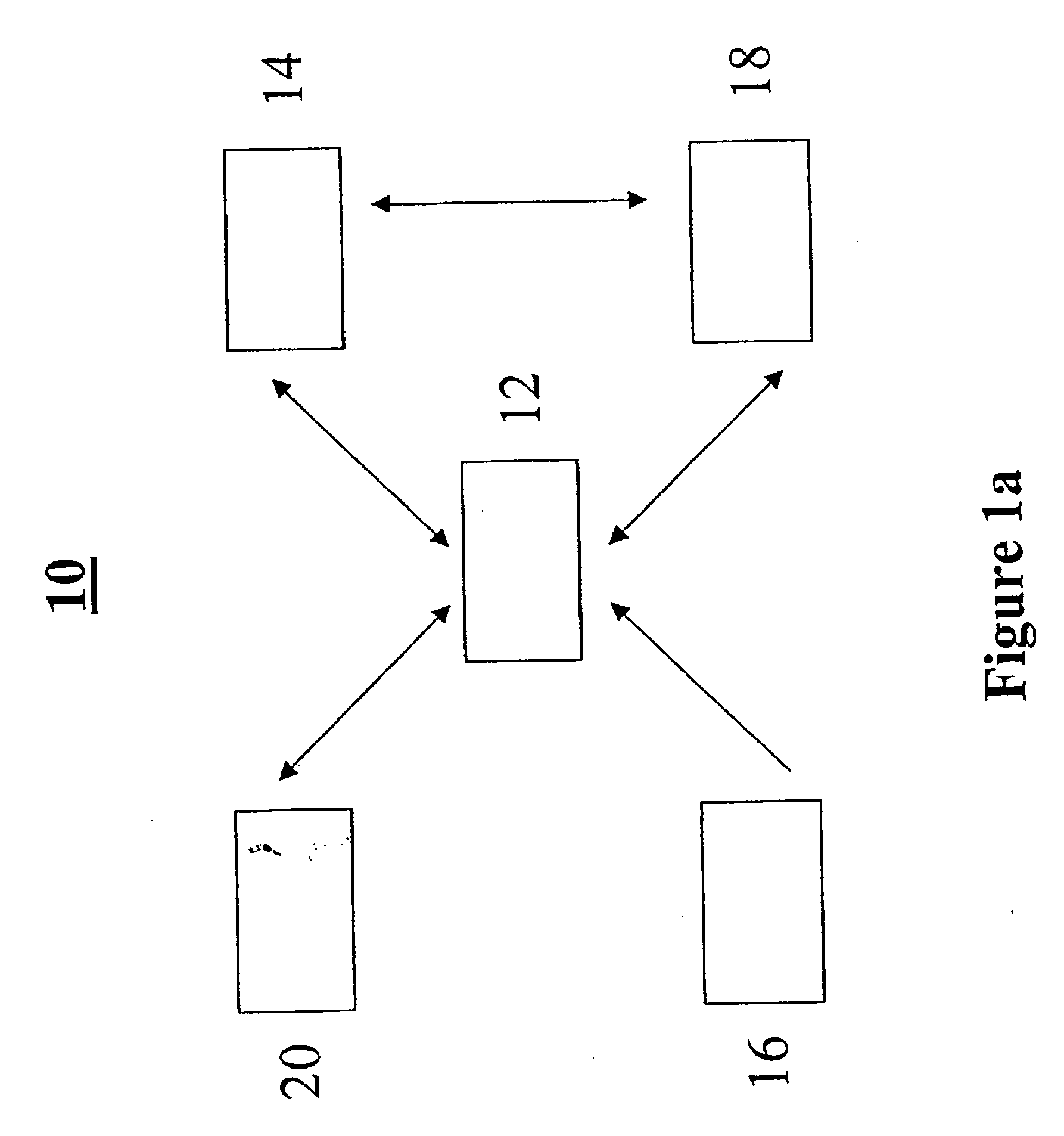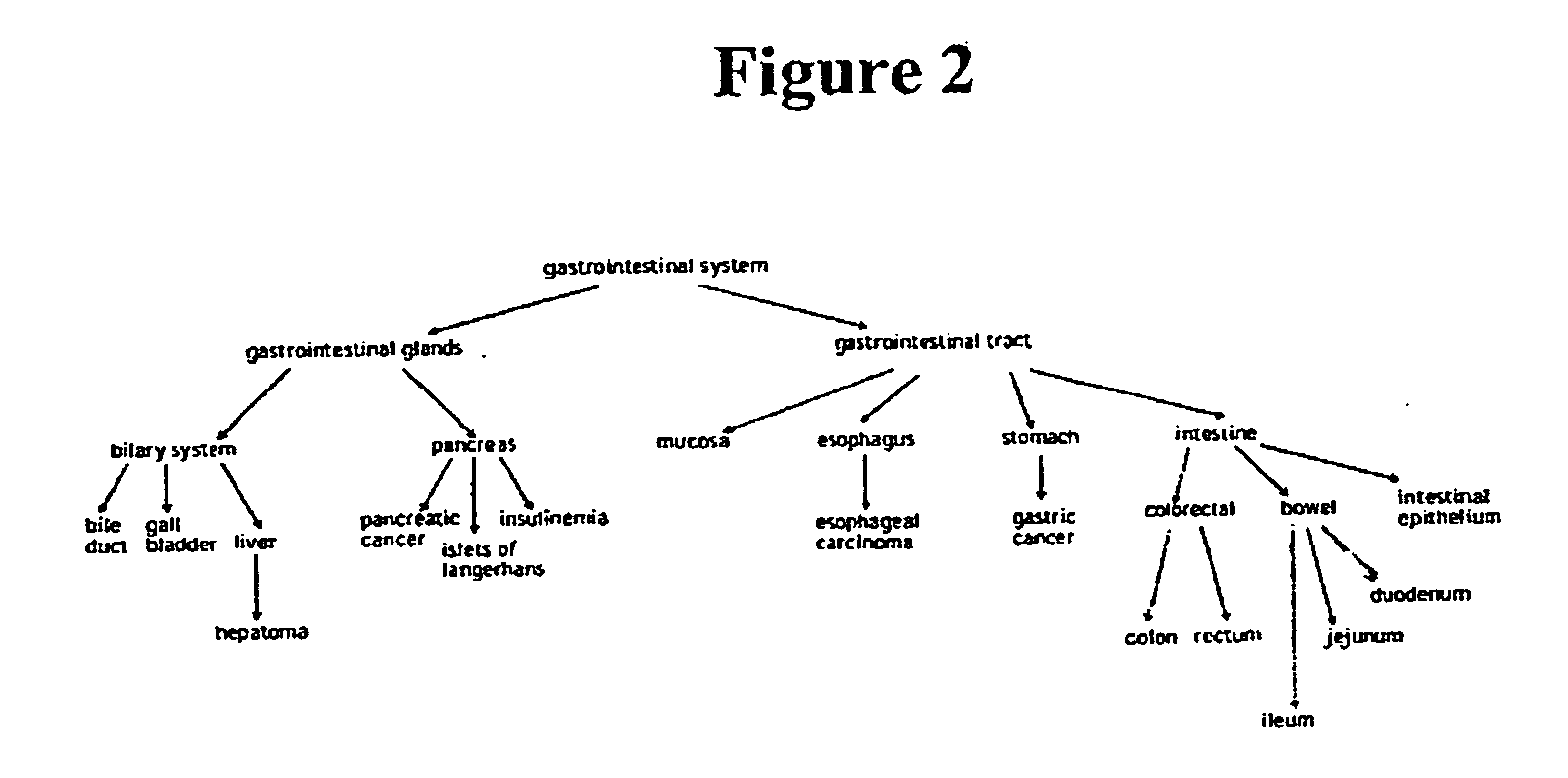Methods and systems for annotating biomolecular sequences
a biomolecular sequence and annotation technology, applied in the field of methods and systems for annotating biomolecular sequences, can solve the problems of ineffective single probe method to identify all sequences in a complex sample, ineffective and laborious single probe method, and the biggest challenge for biologists to analyze data rather than data collection
- Summary
- Abstract
- Description
- Claims
- Application Information
AI Technical Summary
Benefits of technology
Problems solved by technology
Method used
Image
Examples
example 1
Identification of Alternatively Spliced Expressed Sequences Background
[0606] The etiology of many kinds of cancers, especially those involving multiple genes or sporadic mutations, is yet to be elucidated. Accumulative EST information coming from heterogeneous tissues and cell-types, can be used as a considerable source to understanding some of the events inherent to carcinogenesis.
[0607] Although a large number of current bioinformatics tools are used to predict tissue specific genes in general and cancer specific genes in particular, all fail to consider alternatively spliced variants [Boguski and Schuler (1995) Nat. Genet. 10:369-71, Audic and Claverie (1997) Genome Res. 7:986-995; Huminiecki and Bicknell (2000) Genome Res. 10:1796-1806; Kawamoto et al. (2000) Genome Res. 10:1817-1827]. Alternative splicing is also overlooked by wet laboratory methods such as SAGE and microarray experiments which have been widely used to study gene expression, however remain to be linked to alt...
example 2
Cluster Distribution of Alternatively Spliced Donor and Acceptor Sites
[0615] Alternative splice events include exon skipping, alternative 5′ or 3′ splicing, and intron retention, which can be described by the following simplification: a single exon connects to at least two other exons in either the 3′end (donor site) or the 5′ end (acceptor site), as shown in FIG. 3. Table 2 below lists some statistics of alternative splicing events based on this simplification.
TABLE 2Alternative donor siteClusterAlternative acceptor siteCluster13690137512226922388313483151147604799543555086 and above5666 and above710Total9068Total9667
[0616] Distribution analysis—As described hereinabove a valid donor-acceptor concatenation must be supported by at least one mRNA or by ESTs from at least two different libraries. 8254 clusters were found to have both alternatively spliced donor and acceptor sites. When the lower bound on the number of EST libraries supporting each donor-acceptor concatenation was i...
example 3
Tissue Distribution of ESTs and Libraries Following LEADS Alternative Splicing Modeling
[0617] Cluster analysis performed to identify alternatively spliced ESTs (see Example 2) was further used for tissue information extraction. Table 3 below lists ten tissue types with the largest numbers of ESTs along with those from pooled or uncharacterized tissues.
TABLE 3Number of ESTsNumber of LibrariesTissueNormalCancerTotalNormalCancerTotalBrain9302487803180827302555Lung354558559612105192156248Placenta86571272911138622593262Uterus300527152110157399107206Colon237967499898794274445719Kidney42628468118943995463Skin32436430857552181018Prostate403122796368275131135266Mammary gland265093663863147305665970Head12354501676252162800862and neckPooled17861899217961015116Uncharacterized76193972185914778106884
[0618] Evidently, ESTs derived from lung, uterus, colon, kidney, mammary gland, head and neck were obtained aminly from cancerous libraries. The distribution of ESTs in normal and cancer libraries ...
PUM
 Login to View More
Login to View More Abstract
Description
Claims
Application Information
 Login to View More
Login to View More - R&D
- Intellectual Property
- Life Sciences
- Materials
- Tech Scout
- Unparalleled Data Quality
- Higher Quality Content
- 60% Fewer Hallucinations
Browse by: Latest US Patents, China's latest patents, Technical Efficacy Thesaurus, Application Domain, Technology Topic, Popular Technical Reports.
© 2025 PatSnap. All rights reserved.Legal|Privacy policy|Modern Slavery Act Transparency Statement|Sitemap|About US| Contact US: help@patsnap.com



